
Welcome to Hyperion Records, a British classical label devoted to presenting high-quality recordings of music of all styles and from all periods from the twelfth century to the twenty-first.
Hyperion offers both CDs, and downloads in a number of formats. The site is also available in several languages.
Please use the dropdown buttons to set your preferred options, or use the checkbox to accept the defaults.

| Nikolai Demidenko (piano)» More |
As we know, the Prelude was composed first, so the remaining pieces had to be ‘placed’ around it. One of Rachmaninov’s close friends at that time, the tenor Mikhail Slonov, suggested the title ’Polichinelle’ for what became the fourth piece. As mentioned earlier, it was Rachmaninov’s intention to compose a set of four pieces, but he added a fifth on reading an interview which Tchaikovsky had given to a newspaper critic in November 1892, when he said he felt he had to give younger talents a chance, and mentioned Glazunov, Arensky and Rachmaninov as the most outstanding of the younger school. Rachmaninov was so thrilled; as he said at the time, ‘I sat down at the piano and composed a fifth piece (the Serenade). So now I’ll publish five pieces.’
Rachmaninov premiered the complete Morceaux de Fantaisie in Kharkov on December 27th, and two months later to the day he gave Tchaikovsky one of the first copies of the newly-published set. A week later, Tchaikovsky wrote to Siloti saying how impressed he had been with them, especially the Prelude and the Mélodie. In the event, the Prelude proved a double-edged success. On the one hand, it soon travelled throughout the world (in the 1920s in New York, Rachmaninov heard the Paul Whiteman Band play a jazz version, which he much enjoyed, and had a similar experience in a London restaurant). It spread the fame of the young composer in such a way that by the time he was in his early twenties his name was known to a large international public. On the other hand the very popularity of the work came to curse him later in life, when he became a touring virtuoso: audiences would not let him leave without playing the piece as an encore. Furthermore, in 1893 Russia was not a signatory to any international copyright agreement, so all Rachmaninov ever received for a piece that was played and broadcast millions of times during his life was the forty roubles Gutheil paid for it (he gave two hundred roubles for the five pieces), and the royalties from his subsequent recordings of it. Towards the end of his life Rachmaninov revised three of the five pieces: in 1938 he made a transcription for two pianos of the Prelude, and in 1940 completely revised the Mélodie and Serenade.
from notes by Robert Matthew-Walker © 1983
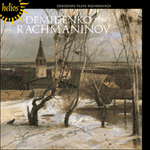 Rachmaninov: Demidenko plays Rachmaninov Rachmaninov: Demidenko plays Rachmaninov‘A marvellous disc … this excellently chosen selection of Rachmnaninov's finest solo piano works is played with superb panache by Demidenko ... ‘A marvellous disc’ (BBC Music Magazine)» More |
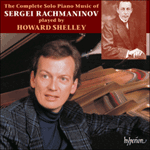 Rachmaninov: The Complete Solo Piano Music Rachmaninov: The Complete Solo Piano Music‘A fine achievement from Howard Shelley and Hyperion alike. These superbly recorded, idiomatic readings demonstrate Shelley's virtuoso pianism and aff ... ‘A significant testimony to Howard Shelley's artistry. Pianistically impeccable, he understands what Rachmaninov was about’ (Gramophone)» More |
 Rachmaninov: Piano Music Rachmaninov: Piano MusicJeremy Filsell is one of very few performers to have established a virtuoso concert career as both a pianist and organist on the international stage. This recital album explores Filsell's lifelong love of Rachmaninov's piano music, surveying selec ...» More |
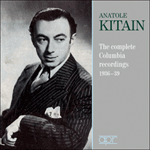 Anatole Kitain - The complete Columbia recordings, 1936-39 Anatole Kitain - The complete Columbia recordings, 1936-39Anatole Kitain (1903–1980) was an exact contemporary and fellow pupil of Vladimir Horowitz in Kiev, where he studied, as did the slightly older Simon Barere, with Felix Blumenfeld. All three developed fabulous techniques and were romantic pianists ...» More |
 Benno Moiseiwitsch - The complete Rachmaninov recordings, 1937-43 Benno Moiseiwitsch - The complete Rachmaninov recordings, 1937-43This is a recording from Appian Publications & Recordings Ltd (to quote the full title)—the label invariably more familiarly known simply as "APR". Since its foundation in 1986, APR has won an enviable reputation as a quality label devoted ...» More |
 Inside tracks - the James Rhodes mix tape Inside tracks - the James Rhodes mix tapeA selection of James Rhodes' personal favourites, tracks taken from his four earlier Signum albums.» More |
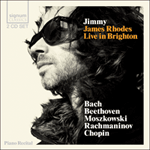 Jimmy Rhodes Live in Brighton Jimmy Rhodes Live in BrightonThis new album—recorded live at The Old Market theatre in Brighton—captures the energy of Rhodes in concert as he performs and entertainingly discusses works by Bach, Beethoven, Chopin, Rachmaninov and more in this 85-minute programme.» More |
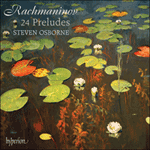 Rachmaninov: 24 Preludes Rachmaninov: 24 PreludesSteven Osborne’s live performances of Rachmaninov’s preludes were greeted ecstatically by critics and audience alike: a new benchmark for performances of these works, and a new departure for this most subtle and sensitive of pianists. Now Steven h ...» More |
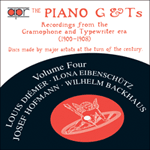 The Piano G & Ts, Vol. 4 - Diémer, Eibenschütz, Hofmann & Backhaus The Piano G & Ts, Vol. 4 - Diémer, Eibenschütz, Hofmann & Backhaus |
 Wilhelm Backhaus - The complete acoustic and selected early electric recordings Wilhelm Backhaus - The complete acoustic and selected early electric recordingsAs one of the great pianists of the 20th century, Wilhelm Backhaus (1884-1969) needs no introduction. He recorded almost continuously from 1908 until his death, but this set, focusing on his earliest recordings, completes APR’s coverage (see also ...» More |
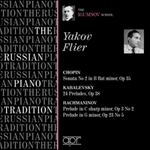 Yakov Flier - Chopin, Kabalevsky & Rachmaninov Yakov Flier - Chopin, Kabalevsky & Rachmaninov |
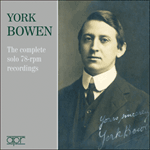 York Bowen - The complete solo 78-rpm recordings York Bowen - The complete solo 78-rpm recordings‘Well filled set and plenty to arrest the imagination’ (MusicWeb International)» More |

